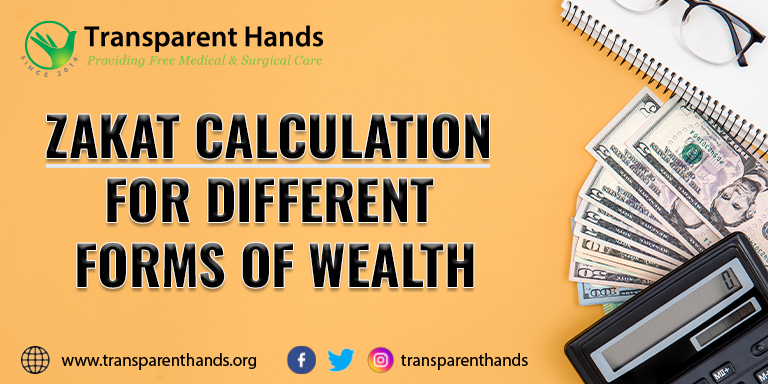Zakat Calculation for Different Forms of Wealth

Zakat, one of the Five Pillars of Islam, is an obligatory act of charity for Muslims who possess a certain amount of wealth. It serves as a means of purification and redistribution of wealth within the Muslim community. However, calculating Zakat can be complex, as it depends on various factors and the type of wealth being considered. In this article, we will delve into a detailed explanation of Zakat calculation for different forms of wealth, relying on authentic information from credible sources.
Nisab: The Threshold
Before diving into specific forms of wealth, it is crucial to understand the concept of Nisab, which is the minimum threshold of wealth required to be liable for Zakat. The Nisab amount is determined based on the value of silver or gold. It is essential to consult reputable Islamic scholars or local authorities to ascertain the precise Nisab value, as it can vary over time and in different regions.
Nisab Threshold For Different Countries in 2023
Cash and Savings
Cash and savings are among the most common forms of wealth subject to Zakat. This category includes money held in bank accounts, cash on hand, and any other liquid assets. The calculation of Zakat on cash and savings involves determining the total amount of wealth possessed for a lunar year and applying the Zakat rate (usually 2.5%).
How to Calculate Zakat on Money
Gold and Silver
Gold and silver, whether in the form of jewelry, coins, or bullion, are subject to Zakat if they reach the Nisab threshold. The calculation for Zakat on gold and silver requires determining the weight and purity of the items. Islamic scholars often differ in their opinions regarding the exact Zakat rates for gold and silver, so it is advisable to consult knowledgeable individuals or organizations to ensure accurate calculations.
Investments and Stocks
Investments and stocks are another form of wealth that may be subject to Zakat. Determining Zakat on investments can be complex due to various factors, such as the nature of the investment and the level of control over the assets. Scholars suggest different methodologies for calculating Zakat on investments, ranging from evaluating the total value of the investment portfolio to considering the profits generated over the year. Seeking guidance from reputable Islamic finance experts is highly recommended in this case.
Business Assets and Inventory
Business assets, including inventory, are subject to Zakat if they meet the Nisab threshold. Calculating Zakat on business assets typically involves evaluating the total value of the assets, deducting any liabilities, and applying the Zakat rate accordingly. It is important to distinguish between assets that are actively used in the business and those held solely for investment purposes.
Agricultural Produce and Livestock
Zakat on agricultural produce and livestock is applicable for those engaged in farming or animal husbandry. Islamic scholars differ in their opinions on the types of products subject to Zakat and the appropriate Zakat rates for each. The calculation often involves assessing the market value of the produce or livestock and applying the relevant Zakat rate as per scholarly opinions.
Conclusion
Calculating Zakat for different forms of wealth can be a complex task, as it requires understanding various factors and consulting credible sources. The Nisab threshold, type of wealth, and applicable Zakat rates are crucial aspects to consider in Zakat calculations. It is essential to seek guidance from knowledgeable individuals, local authorities, or reputable Islamic organizations to ensure accurate Zakat calculations according to one’s specific circumstances.










Leave Your Comments